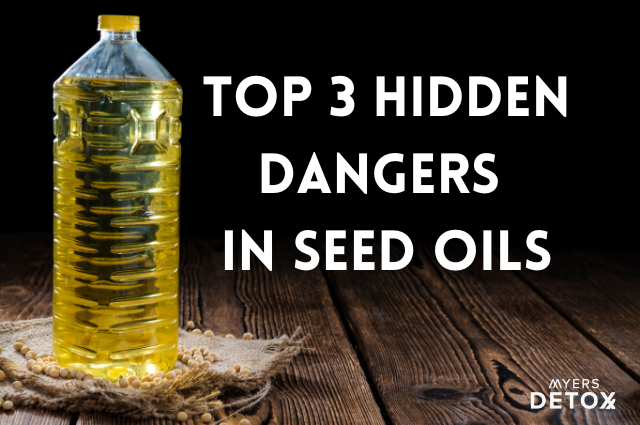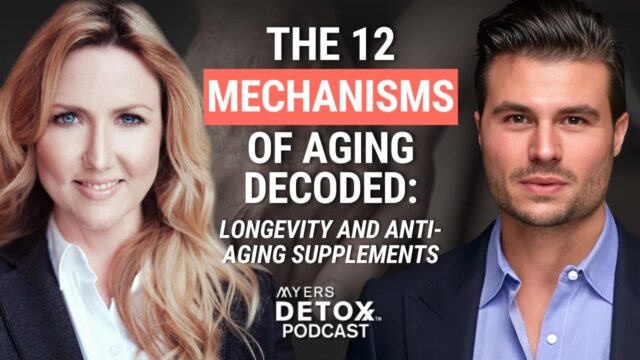Anemia signifies a low red blood cell count or a low hemoglobin level. Learn the true underlying causes and how to heal it naturally.
Anemia is a medical diagnosis in which a person’s blood contains a lower than normal number of red blood cells (RBCs), the cells responsible for cycling oxygen and carbon dioxide between the tissues of the body and the lungs. The symptoms of anemia can also occur if the RBCs present in the blood don’t have enough hemoglobin, a protein that allows the cells to transport oxygen from the lungs to the rest of the body and that gives blood its red color.
Symptoms
When one is anemic, one’s energy level decreases and one can become easily tired. If the condition is extreme, oxygen starvation occurs with many other problems such as fainting, low resistance to infections, inadequate oxygenation of the tissues, and many others. In addition, they may experience symptoms such as:
- Shortness of breath
- Dizziness
- Chest or abdominal pain
- Headaches
- Cold or numb hands and/or feet
- Low body temperature
- Pale skin
- Irritability
- Black, tarry, or bloody stools (from blood loss)
- Weight loss
- Rapid or irregular heartbeat (arrhythmia)
These symptoms occur because the tissues in organs throughout the body may not be getting an optimal supply of oxygen, and because the heart must pump harder to cycle and deliver as much of the available oxygen-rich blood as possible.
Causes
Anemia is a broad term with many causes. Saying anemia is like saying inflammation. It can be difficult to determine the cause of anemia. There are several different classifications of anemia, depending on the cause and the characteristics that are seen when examining the RBC’s under a microscope. Here are some of the most common causes:
- Copper-related anemia. This the most common type of anemia today due to widespread copper imbalance in the population. Listen to this podcast on Copper dysregulation. Many apparent iron deficiency anemias are caused by copper toxicity, as copper regulates iron. Biologically available copper is required for the conversion of iron from the ferric to the ferrous form, and back again, to produce hemoglobin. Bioavailable copper is also required to incorporate iron into the hemoglobin molecule. While anemia due to copper imbalance appears identical on blood tests to iron deficiency anemia, the cause and correction is very different, and it will not respond well to supplemental iron. A hair mineral analysis can help distinguish the two types.
- Blood loss. This is a common cause of anemia, and occurs when a person loses a significant amount of RBCs through bleeding. Blood loss can be caused by heavy menstrual periods, surgery, traumatic injury, cancer, and bleeding in the digestive or urinary tract.
- Low RBC production. The body requires certain nutrients to produce RBCs, including iron, folic acid, and vitamin B12. If a person doesn’t get enough of these nutrients, insufficient numbers of new cells are produced and anemia can result. Chronic kidney disease, cancer, infections, radiation therapy, some medications, and even pregnancy can also suppress the normal activities of the bone marrow and decrease RBC production.
- B12 deficiency (pernicious anemia). This is a less common anemia that occurs mainly in older people, in some vegetarians, and in some people who low levels of hydrochloric acid in the stomach or low digestive enzymes. Most people lose some ability to absorb vitamin B12 from their food as they age. This is a serious problem for many over the age of 60 or perhaps younger, especially if the digestive tract is in poor condition or if one is under a lot of stress. Vitamin B12 is found mainly in animal foods, so vegetarians, especially vegans, are much more prone to this serious condition.
- Drug-induced anemia. This is another extremely common type of anemia due to internal bleeding, usually from the stomach. It is most commonly seen in older people who use non-steroidal anti-inflammatory drugs for pain such as aspirin, ibuprofen, Tylenol, Aleve and the others. These drugs damage the stomach lining and cause chronic internal bleeding in thousands upon thousands of people. Some die as a result. Stopping the drugs is usually sufficient to correct the cause of the anemia. I would suggest always avoiding long-term use of these drugs for this very reason, as often the bleeding is hard to detect until the anemia is far advanced.
- Chronic infections. These may cause anemia by an interesting mechanism. The body may sequester iron to keep it out of the blood stream during some infections because iron tends to favor the growth of certain bacteria in the body. One must correct the infection and the anemia most often subsides. Other infective organisms such as beta-hemolytic strep may destroy red blood cells.
- Chemical poisoning. Pesticide exposure or something else will occasionally cause unusual blood disorders of many kinds. In general, the chemical poisons the bone marrow in some way and this impairs proper blood formation. However, other mechanisms may be present as well, such as weakening the red blood cells and hastening their destruction. Myers Detox programs remove most toxic chemicals from the body.
- Lead and other toxic metals. Lead poisoning is well known for causing a type of anemia that can be fatal. Elevated lead is often not revealed on any tests until it is eliminated from the body using a Myers Detox or some other method. Lead is often hidden because it is deposited deep within bone marrow and other inaccessible areas of the body and may not show up on blood, urine or hair mineral analysis.
- High RBC destruction: Some inherited blood disorders can destroy RBCs at a rate faster than the body can replace them. These conditions include sickle-cell anemia and thalassemia.
Risk Factors
Anemia is considered widespread and affects an estimated three million Americans. It is most common in women, primarily because of menstrual blood loss and pregnancy; older adults, who are more likely to have nutritional deficiencies or chronic conditions that cause anemia; and children younger than age two. Risk factors for anemia include:
- Diets low in iron, folate, and/or vitamin B12
- Vegetarians and Vegans
- Blood loss
- Chronic infections
- Conditions such as cancer, HIV/AIDS, inflammatory bowel disease, and liver or kidney disease
- Family history of inherited anemia
Diets low in meats and eggs are a big risk factor for anemia. These diets are low in absorbable iron and are high in copper. In addition, they are low in zinc, which protects the body against too much copper. Such diets are also low in vitamin B12, especially strict vegetarian and vegan diets.
As a result, these diets cause also cause pernicious anemia due to low vitamin B12. However, they can also cause an anemia that looks exactly like iron deficiency anemia, even if one takes iron. The anemia is due to biounavailable copper. This is a widespread cause of fatigue, lowered resistance to disease and other problems today, especially for women.
Conventional Treatment
The goal of treatment is two-fold. The first objective is to increase the blood’s capacity to carry oxygen throughout the body, which is done by increasing the number of RBCs and hemoglobin to normal levels. The second goal is to diagnose and treat the underlying cause of anemia, if possible. The source of any suspected blood loss should always be determined before initiating therapy.
The conventional therapies used to treat anemia depends on the condition’s cause, severity, and nature, and can include:
- Supplemental iron to correct deficiency
- Supplemental folic acid and vitamin B12 to correct deficiency
- Antibiotics to treat infections
- Erythropoietin (Procrit) to increase RBC production in people with kidney disease
- Hormonal treatments to decrease heavy menstrual bleeding
- Blood transfusions
- Removal of the spleen to slow RBC destruction
Wendy’s Natural Recommendations
It’s vital to recognize that nutritional advice on iron has changed. As recently as the 1970s, the conventional wisdom was that iron is a tonic, and should be taken by virtually everyone to counteract fatigue and “tired blood.” But more recent research suggests caution. Iron is a strong oxidant and can potentially promote the development of inflammatory conditions, including heart disease.
Iron is also one of the few minerals that the body cannot readily eliminate, and overconsumption can make it accumulate to toxic levels, especially in the liver. So unless you are a heavily menstruating woman, have had significant blood loss, or have otherwise been determined by a physician to be an appropriate candidate for iron supplementation, you should not take any supplement containing iron unless you have first had blood testing to show you need iron and taken lifestyle measures to boost your iron levels like eating red meat.
With that in mind, I suggest the following strategies for addressing mild to moderate cases of iron-deficiency anemia. These should be considered in addition to conventional therapy that addresses the root cause of anemia:
Lifestyle
- Avoid Cast Iron Cooking. It is commonly recommended to cook in cast iron cookware to obtain iron. However, the form of iron in cast iron is a toxic form of iron not usable by our bodies. Avoid this advice.
Supplements
- B12. Sometimes iron cannot be absorbed because of B12 deficiency. This is sometimes caused by a condition called pernicious anemia where the intestines cannot absorb B12. If you have anemia, be sure to have your doctor check your levels of B12. Increase consumption of meat to increase B12 intake. You can also do B12 injections of methylcolbalamin, though this is not necessary if you consume meat 2-4 times a month. It is more advisable if you supplement to take an organic food-based B complex.
- Iron. If a physician advises supplemental iron, you can take an over-the-counter iron supplement. The variety I recommend is called Floradix, which provides a highly absorbable form of iron known as iron gluconate.
- Vitamin C. Vitamin C improves iron absorption. Avoid taking ascorbic acid. You want to take a food-based organic Vitamin C. Also, eat Vitamin C rich citrus fruits and greens. I like Liposomal Vitamin C by Quick Silver Scientific and Dr. Mercola’s Liposomal Vitamin C.
Food
- Red Meat. Increase intake of red meat (preferably organic grass fed) like lamb and beef, all of which provide some iron in a form the body can readily use. Chicken and fish have some, but not enough if you have anemia. Vegetarian sources include whole grains, dried beans, molasses, dried apricots and prunes, raisins, and leafy green vegetables such as kale, beet greens and chard, as well as exotic greens such as dandelions, lamb’s quarters, nettles and yellow dock. The iron in animal products is in a form that far more absorbable than the form found in plants.
- Eat more foods that enhance iron absorption. These include fruits and vegetables high in vitamin C, or yogurt or sauerkraut, both of which contain lactic acid, which promotes iron absorption. Fermented soy foods can aid absorption as well.
- Avoid foods that interfere with iron absorption. Avoid caffeinated beverages, dairy and bran, all of which can interfere with iron absorption.
Alternative Methods
- Myers Detox Protocol with Hair Mineral Analysis. Myers Detox Protocol with hair mineral analysis is one of the best ways to address the underlying causes of anemia, be they copper dysregulation, b12 deficiency, iron deficiency or a heavy metal toxicity contributing to anemia. The underlying cause of most disease and health conditions are chemical and heavy metal toxicity. The problem with anemia is it can have over a dozen different causes, all of which are addressed on this program. Anemia will no doubt be helped by eliminating copper toxicity, heavy metals and industrial chemicals, built up in your system over your lifetime, that are aggravating this condition. The presence of certain heavy metals and toxic forms of minerals can prevent iron from being absorbed. In the process, you will greatly increase your overall health and prevent future diseases from developing. I offer extensive information on this site on how to detox from heavy metals and chemicals.
This material is for educational purposes only. The preceding statements have not been evaluated by the Food and Drug Administration. This information is not intended to diagnose, treat, cure or prevent any disease.










